

The northernmost vertex in the hexagon of Metropolitan France, the port city of Calais is nearly 100 kilometers closer to Brussels than to Paris. On a clear day, you can see the White Cliffs of Dover, one of the most iconic of England’s natural wonders, from its shores. Several centuries ago, Calais belonged to the English crown—its “greatest jewel.” More recently, the Germans seized it and then razed it. Calais is, in a way, the quintessential European border town. Here, Europe’s incessant identity crises and territorial struggles surface in physical form.
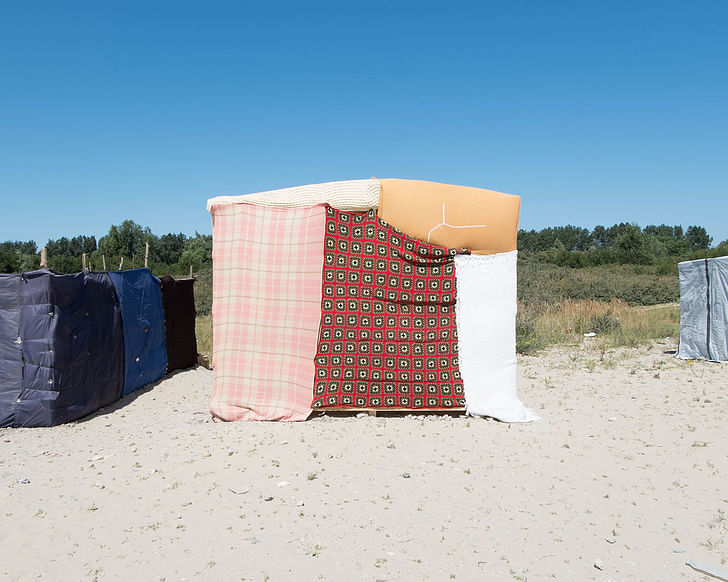
Since the beginning of its so-called migrant crisis in 2015, Europe has struggled to accommodate, physically or conceptually, the more than 1.2 million people displaced by ongoing conflicts in Western and South Asia, Africa, and the Western Balkans. While Germany has taken in the largest amount of refugees and Italy has likely had the most corpses wash up on its shores, until its demolition earlier this year, Calais and its refugee camp, nicknamed the ‘Jungle’ had served as a defining and dominant image in the media. Temporary home to many hoping to get into Britain via the Eurotunnel, the camp was recognized as a particular locus of the continent-scale crisis. Italian photographer Marco Tiberio was certainly not the first in his profession to document the camp—but his approach differed significantly from others.I wanted to show that we can talk about a hot topic like migration also from a different perspective
“France's Calais 'Jungle': Where dreams go to die,” reads one recent headline. “The Calais jungle was like a vision of 'Hell'”; reads another. Or: “Horrors of Calais migrant camp EXPOSED”; “Demolishing purgatory: what happens to the refugees when Calais’s ‘Jungle’ is destroyed?” Such headlines, accompanied by images of burning shelters, have dominated coverage of Calais and its so-called Jungle. But, according to Tiberio, they do a disservice to the reality on the ground. While undoubtedly facing extreme hardships, the refugees Tiberio met were resilient, capable, and creative. This was not hell or purgatory. Circumstances were dire, but the people inhabiting the camp were making the best out of what they had, creating a much-needed sense of home following incredibly arduous migration experiences.

Tiberio spent several weeks in the camp photographing not individuals—many of whom have religious issues with being photographed—but rather the shelters they created. Despite many of the portraits painted by the media, the migrants in Europe aren’t some single mass of ‘refugees,’ Tiberio is keen to point out, but rather a diverse group of individuals coming from countries very far from one another, geographically and culturally. While the new homes they built in Calais were temporary and ad hoc, Tiberio found that the residents of the ‘Jungle’ brought building practices and aesthetics from their home countries to the camp.
Tiberio and I traded messages about the project, entitled Invisible Cities: Architecture of Exodus, and his experience in Calais.
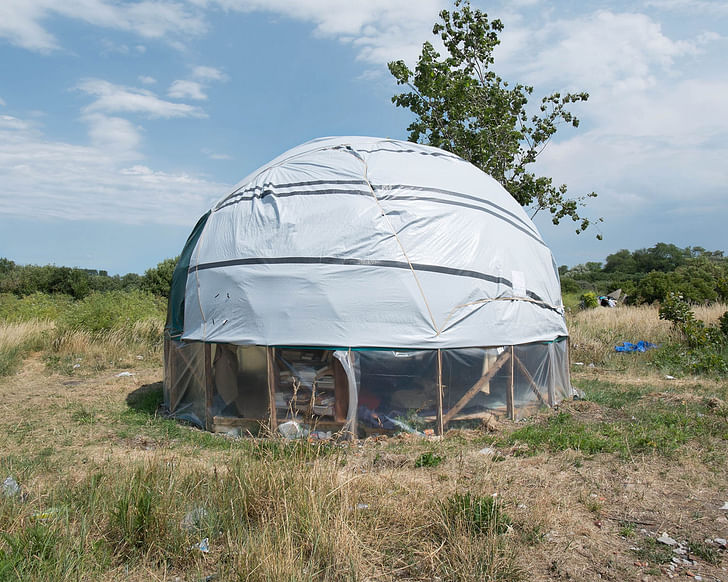
I was hoping you could tell me a bit about yourself to begin. What’s your background?
I’m Italian but have lived abroad for a long time, before in Tunis and then in Brussels, from where I just came back to my hometown of Ravenna where I am the co-founder of a communication and visual research studio called DeFrost. I have a BA in Turkish and Arabic obtained at Ca’ Foscari University in Venice and an MA degree in European Studies from KU Leuven. I worked for a couple of years as an independent researcher for Italian and foreign academic reviews before turning to photography. Before developing Invisible Cities and Satellites (my second project), I realised a documentary about people living on the borders called Beyond the Fortress, together with two Belgian documentary videomakers. In my projects I use both classic photography and methods of appropriation, extraction and composition.
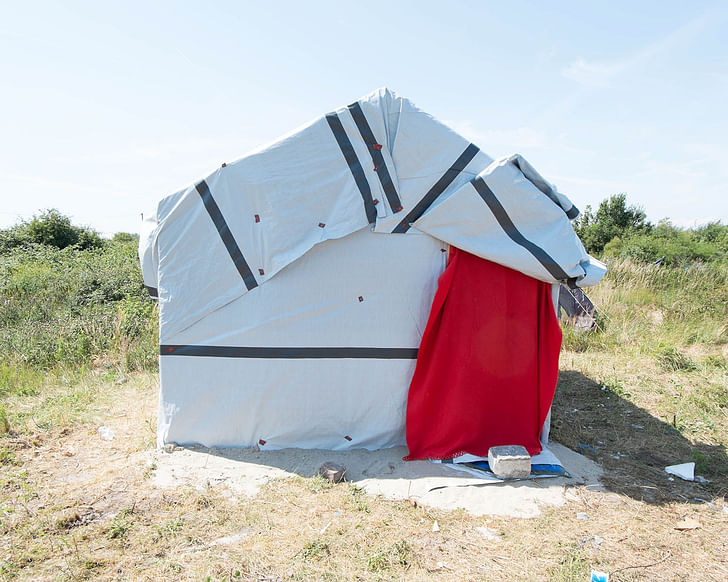
How did you develop the “Invisible Cities” project? What brought you to Calais? I know you mentioned working with an architect in the project submission.
I have been long involved in projects about migration. I have been to Calais for the first time in January 2015, because I wanted to see first hand the situation (at the time I was just back from Lampedusa).Most of the media cover this topic trying to convey poverty, pity and misery At first, I didn’t know how I could have worked on the subject there, because I am not at ease with documentary photography, so I needed to find another approach. So, together with Maria Ghetti, who is an architect and designer (and the other co-founder of DeFrost Studio) I decided to try an architectural approach and I found it was very interesting so I kept it until the end. She helped me throughout the whole project, especially explaining [to] me the specific things and she also come down with me in Calais a couple of times.
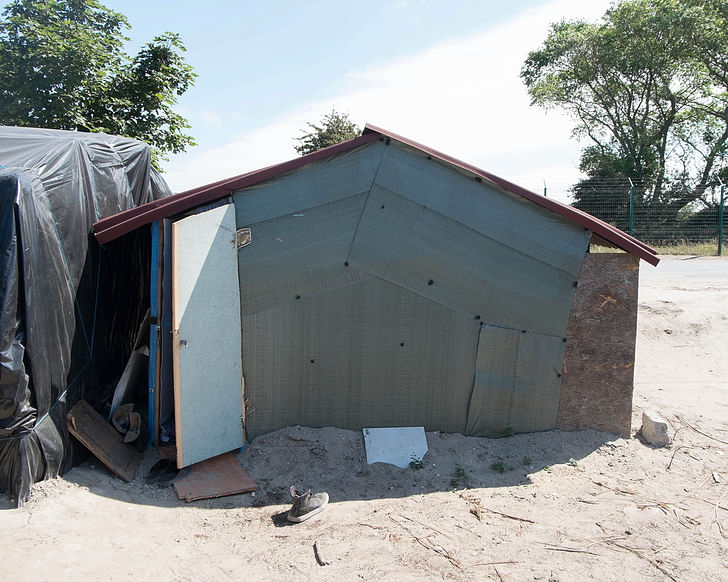
Did you approach the project with an idea you hoped to convey, or was it more research-driven?
To develop this project I needed [to conduct] strong research, both about the structure of each house, and also about the lives of the refugees. But I also had in mind a specific goal that I would have liked to reach: that is to say, I wanted to show that we can talk about a hot topic like migration also from a different perspective. In Europe, most of the media cover this topic trying to convey poverty, pity and misery and in my opinion this is worsening the situation. This is why I tried to tell different a story.
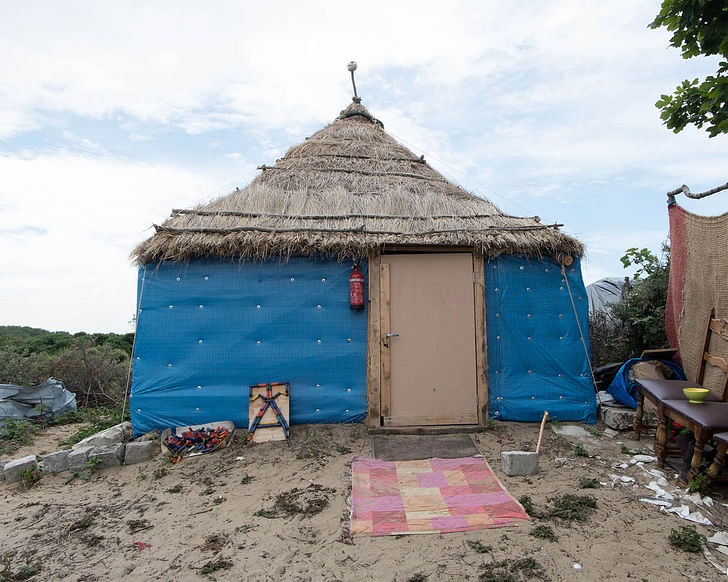
Your photo essay makes a rhetorical statement that there’s a correlation between the original site of departure for an immigrant and the homes they construct in the “Jungle.” Can you elaborate on this?
I discovered this behaviour especially among the Sudanese community, which is quite forward looking,To build their shelters in the camp the refugees also used specific techniques they use at home but also very attached to its motherland. If we take as example this house (above), which has been built by a refugee-architect from Sudan, it clearly recalls the buildings of the Nuba Mountain region (Sudan), a region from where many refugees come from. Apart from the houses’ designs, to build their shelters in the camp the refugees also used specific techniques they use at home. For example, they frame specific kinds of tree branches together with pieces of chords or screws and they use blankets in the interior part of the walls to make insulation.
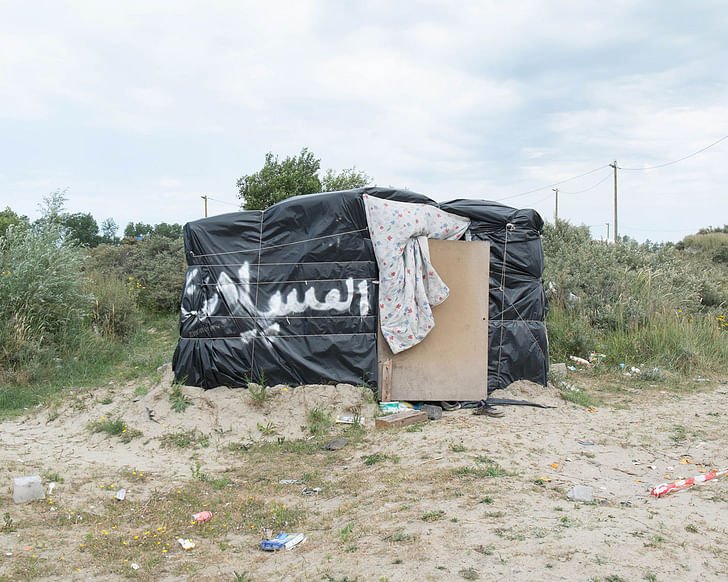
What was your experience like photographing the refugees? Did you explain your project to them? How did they react?
Overall it was a great experience. At the beginning it had been hard, because we are not used to be confronted to such terrible living conditions, but after a while it changes and you realise that for them it is already a great accomplishment to be there. And they put you at ease. I always explained my project to them and they were very happy and proud that I was photographing something they actually built (I also made a little exhibition for them in a saloon they built). Actually they don’t like to be photographed, so it was also easier for me because they didn’t feel as I was stealing something from them and they were very keen in helping. In the camp I used to talk mainly English and French, but also Italian (especially with Afghans and Pakistani refugees) and Arabic with some Sudanese.
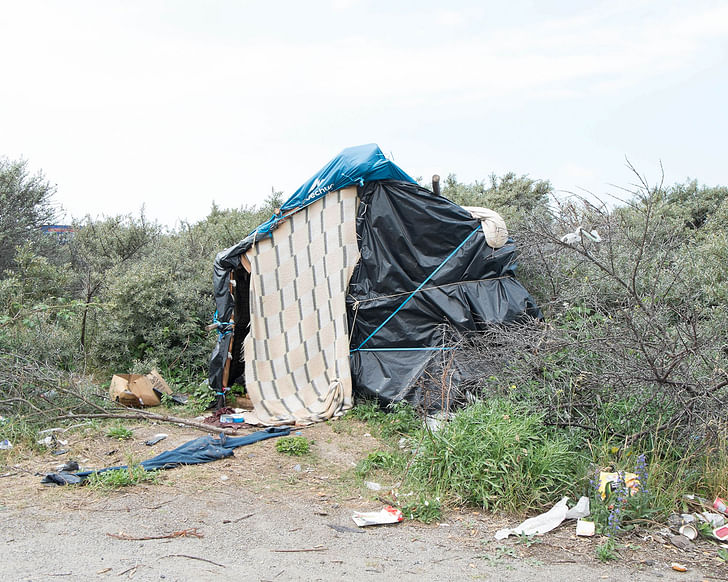
Right now, in your hometown of Brussels and elsewhere across Europe, there’s an enormous pushback against the influx of refugees. What’s your perspective on this?
I think that a part of the fault is on the media, which always covered the topic in unbalanced ways. And the rest is on the states and the EU which were clearly unprepared [for] something that was quite foreseeable, especially after the Arab Spring. Apart from that, from what I could see in Calais, where I also had many discussions with refugees, we tend to stigmatise the overall group of migrants/refugees as just one, while it’s very We tend to stigmatise the overall group of migrants/refugees as just one, while it's very fragmented.fragmented. For example, I had the chance to talk with refugees that you could tell very quickly weren’t in Europe to improve their situation, but more as a resentment towards Europe, and that [struck] me a lot. Many of them burned their European ID documents (e.g. visas) because they didn’t want to be sent back to the first country where they arrived. Many of these refugees were just teenagers between 14 and 20.
On the other side, I met many refugees that were really aiming for a better life. Fathers who left their families (something that I wouldn’t have [been] able to do probably) with the only goal to find a job and rejoin their wives and sons in Europe. And that’s admirable I think. So I think that when we talk about this very hot topic we should try to understand and make distinctions also, because there is no such thing like “refugees”. Each of them has their own reason for coming here and goals, so each of them should be treated, respected and criticised (if so) as a single human being. I think that this is the main problem when we talk about them.

Architecturally speaking, what were some of the most inventive aspects of the shelters you saw?
My favourite aspect was how they used blankets to build insulation in the interior part of the walls. They always put one or two layers of blankets and then a plastic cloth on top of it to keep everything dry. It was also great how they framed the tree branch making incredibly strong structures.By seeing this as something beautiful we recognise their incredible resilience
And what were some of the greatest challenges posed to the refugees living in Calais?
Apart from crossing to the UK, I think that greatest challenge for everybody is winter. The area of Calais is very cold, rainy and windy, especially in winter, with winds that can strike at 200km/h. The camp is almost always flooded in winter so they basically live in the mud. To stay warm and have light at night, they use candles or old gas tanks, and that’s why fires often happen, destroying entires areas of the camp.
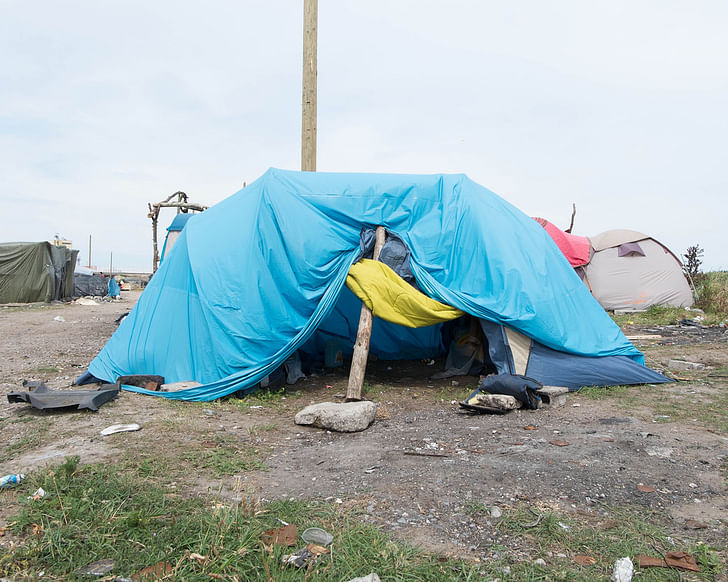
Is there a danger to viewing these shelters as aesthetic objects? As in, by noting their formal qualities, do we risk forgetting the conditions that demanded them?
I think it’s the opposite actually. By seeing this as something beautiful we recognise their incredible resilience. It’s true that sometimes, when I was there, I almost forgot about their situation, but this also allowed me to joke with them and they were happy to do so. I think that maybe they also needed to forget this sometimes.
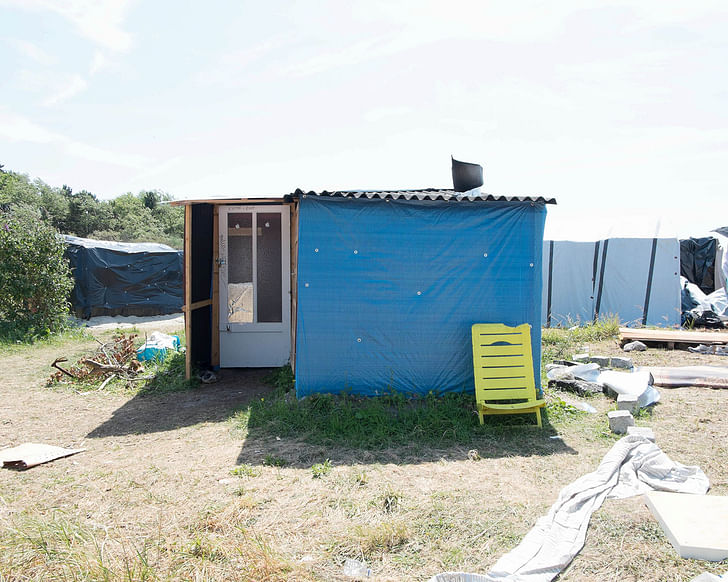
What do you hope the takeaway from your project is for a viewer?
With this project I wanted to give a different take on the topic. I would like the viewers to learn something new (through the pictures and their captions). And even if there is no migrants in the pictures (or maybe just because of that), in the end I hope the viewers will see them with different eyes, more humanly let’s say.
Now the camp has been almost all destroyed, so this project has also become an archive and testament of the Jungle.

This interview is part of Archinect's special May 2016 theme, Help. How can we design more equitable societies? Our open call for socially-engaged design work ends May 22 – click here to submit.
Writer and fake architect, among other feints. Principal at Adjustments Agency. Co-founder of Encyclopedia Inc. Get in touch: nicholas@archinect.com
2 Comments
On a related note, earlier this year Léopold Lambert published his own Photographic Report from Calais’ “Jungle”, with a particular emphasis/focus on the overwhelming police/securitized presence.
It's about time for Benetton to step in and make some expensive fashion t-shirts.
Block this user
Are you sure you want to block this user and hide all related comments throughout the site?
Archinect
This is your first comment on Archinect. Your comment will be visible once approved.